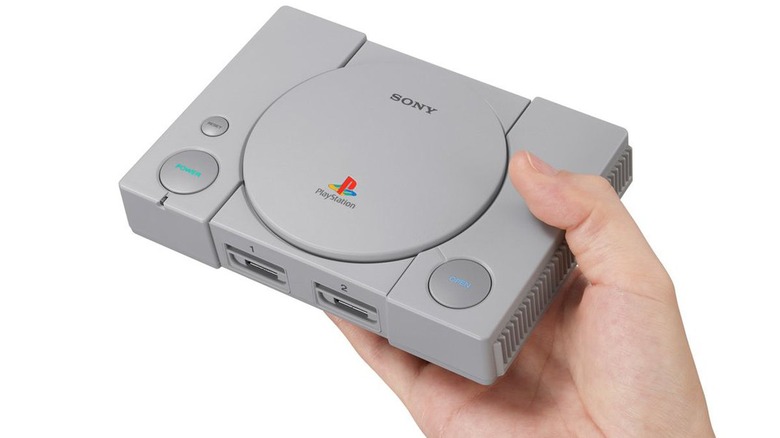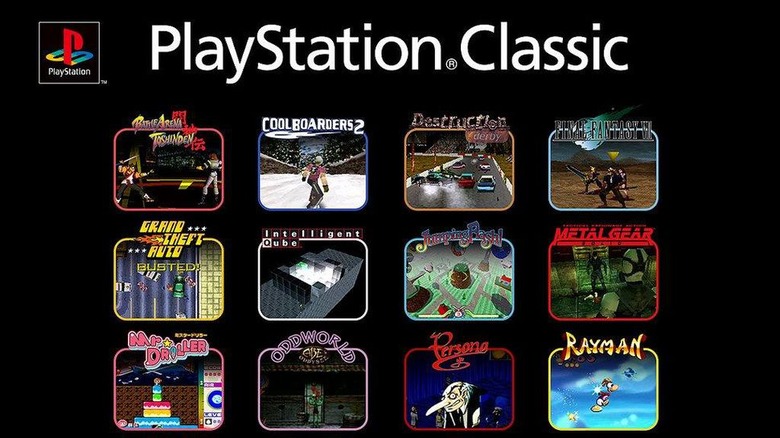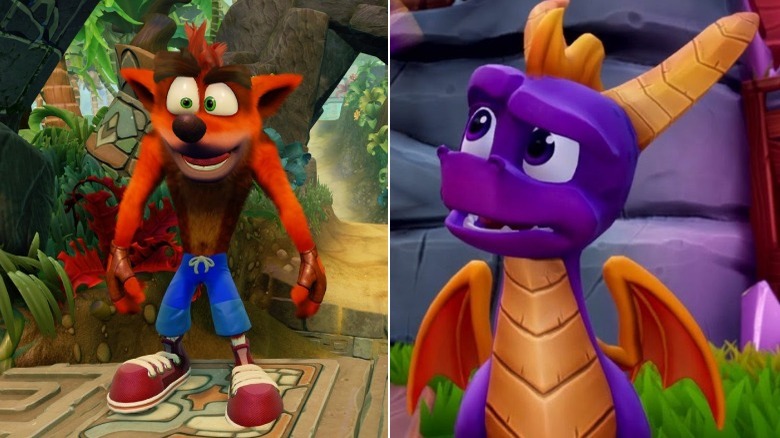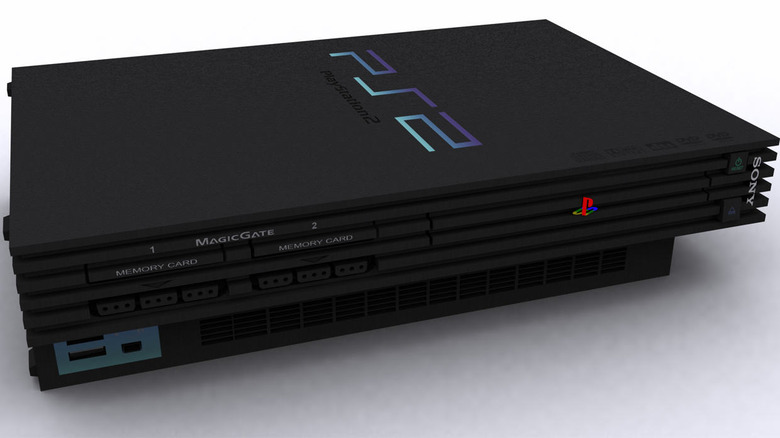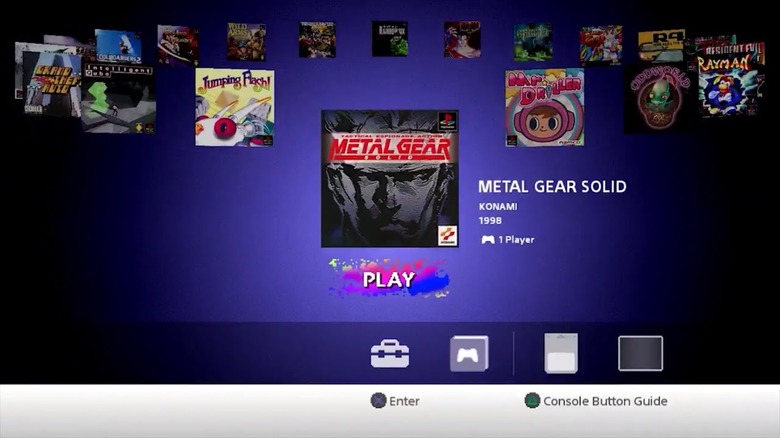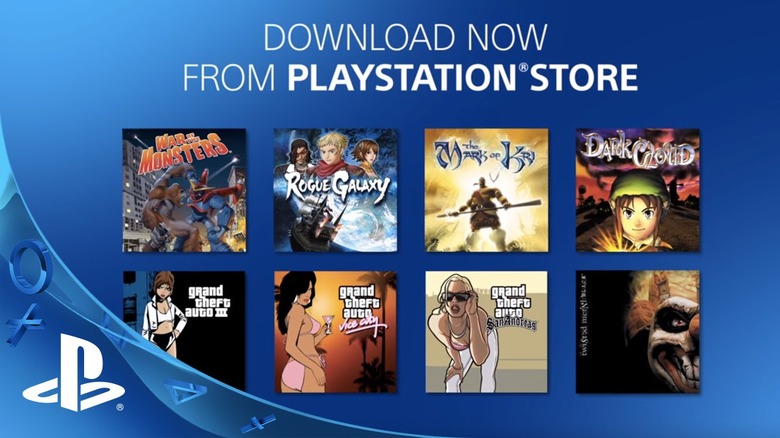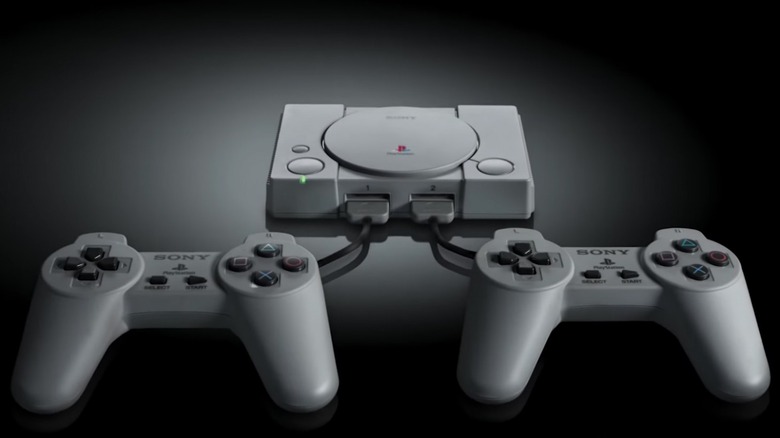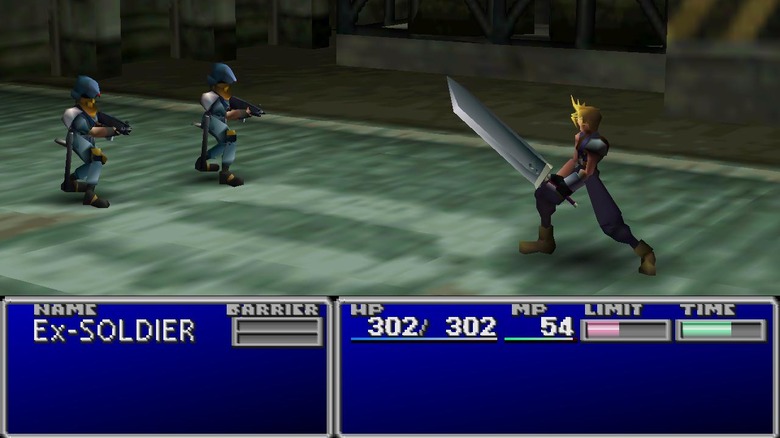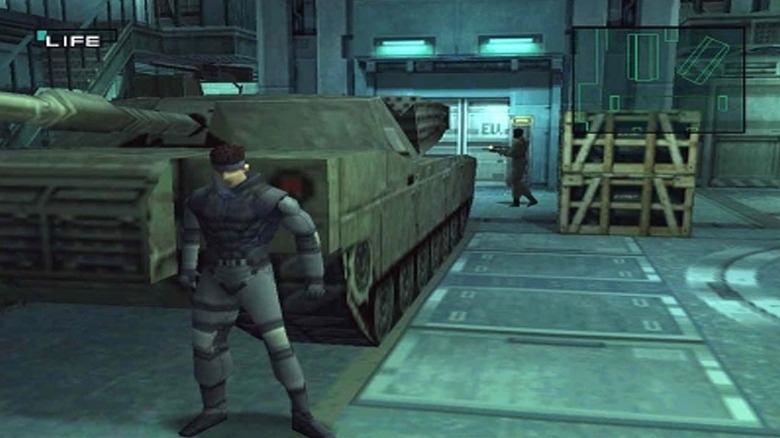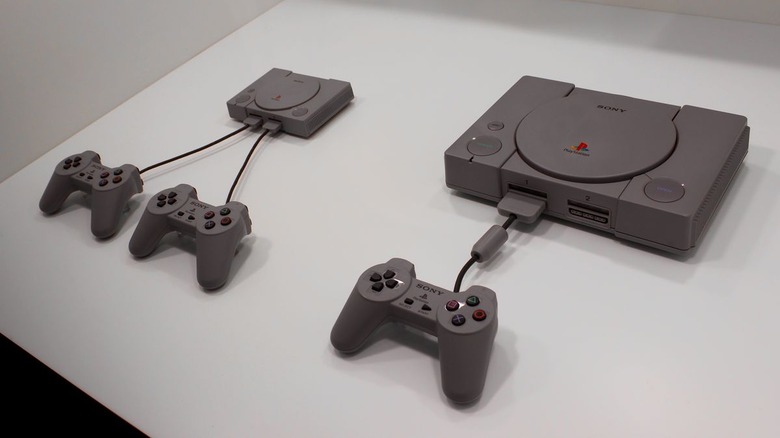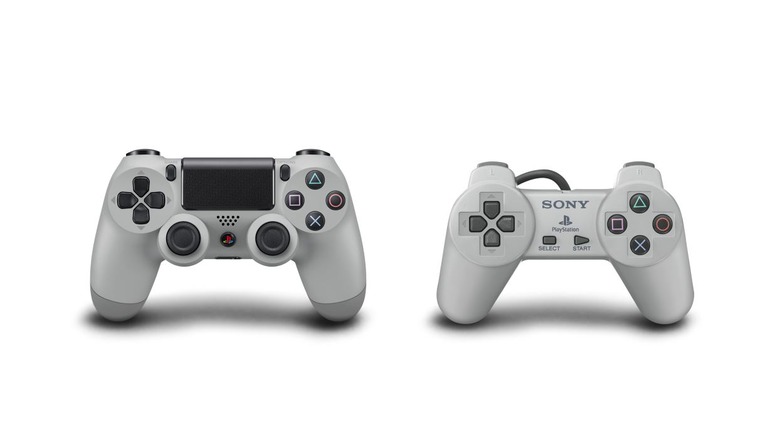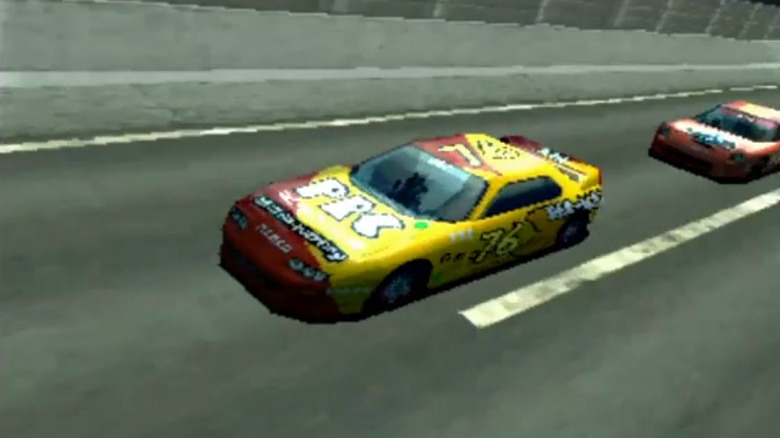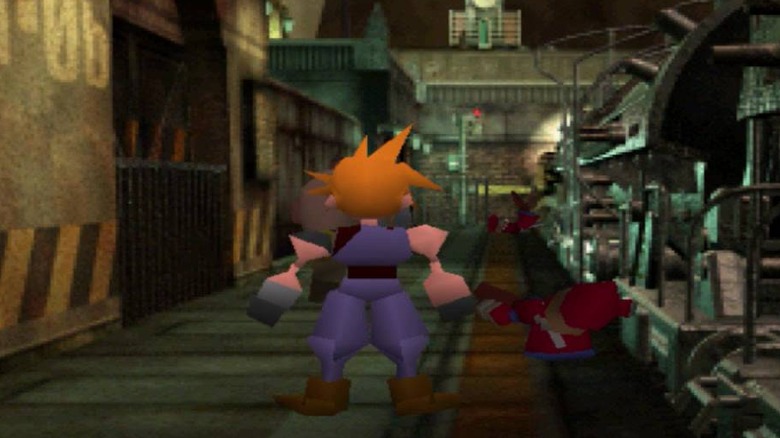Why The PlayStation Classic Bombed
The PlayStation Classic had a lot of promise when it was announced in September 2018. It was coming on the heels of two immensely successful retro mini-consoles in the Nintendo NES Classic and SNES Classic, and consumers seemed interested in similar offerings. The PlayStation One also had one of the better game libraries available to any console, with no lack of options to choose from.
Somehow, though, that promise just wasn't realized. The PlayStation Classic was a disaster from the moment early hands-on reviews criticized its game selection and design choices, and its launch did little to make anyone feel better about it. By the holiday season of 2018, the retro console was already being heavily discounted by retailers, who had plenty in stock.
So what went wrong? As it turns out, there were a lot of reasons the PlayStation Classic might not have been the best direction for Sony to head in. Here's our compilation of the many reasons why the PlayStation Classic bombed.
The games lineup is anemic
The first issue many critics noticed when the PlayStation Classic revealed its full games lineup was that it seemed a little lackluster. Games like Final Fantasy 7 and Metal Gear Solid are still very capable of selling a system, though. Perhaps the lesser known entries would surprise everyone?
Unfortunately, Intelligent Qube and Jumping Flash! didn't impress on what was likely the first time many consumers played them. When you remove many of the Sony exclusives that seemed shoehorned in despite a lack of credibility, the PlayStation Classic's games lineup is extremely small.
Nintendo's Classic systems had games lineups that featured a plethora of "best game ever on the platform" contenders. The PlayStation Classic had, arguably, three or four of those. Iconic games like PaRappa the Rapper were conspicuously absent. Even when Sony-made titles appeared, they didn't seem to make a lot of sense. Where was Ape Escape?
The PlayStation Classic might boast a games lineup of twenty titles, but in practice, it feels a lot smaller. That's a major issue for a system that's main selling point isn't technology or future innovation. If nostalgia is the name of the game, virtually every game on a Classic console is crucial in making it an appealing investment for gamers.
Two extremely important titles were no-shows
Beyond the unimpressive lineup that Sony assembled in the PlayStation Classic, there were serious issues with some absentee titles. For better or worse, the PlayStation One will forever be associated with some of its more popular titles: games that helped build Sony and the PlayStation into one of the industry's most important players.
Two of those game absences were particularly egregious. Crash Bandicoot is one of the most important games ever released on the PlayStation. At the time, the game pushed 3D platforming hard, innovating a number of different mechanical decisions that would later be embraced by other developers. Part of the reason Crash Bandicoot was created was because Sony wanted a mascot like Sonic or Mario. Crash being absent on the PlayStation Classic is even more bizarre with that in mind.
The other mascot of the PlayStation One era was Spyro, the hero of the Spyro the Dragon franchise. Spyro was another platformer that embraced 3D graphics for its level design, creating memorable environments that complemented a unique, fun journey involving the purple dragon. Fans loved Crash and Spyro and they've been inextricably part of the PlayStation identity since their debuts.
One of these characters being absent on the PlayStation Classic may have been excusable. Both pulling a disappearing act shows that Sony didn't really have a clear idea of what made the PlayStation One so good, and the Classic device suffered greatly as a result.
The PlayStation One wasn't the best old-school Sony system
The PlayStation One was a delight, and launched Sony into the top tier of the gaming industry. There's no arguing that it isn't one of the better consoles ever produced, and Sony's logic in choosing it as the basis of their first Classic console launch makes sense.
That being said, however, it has also been around two decades since the PlayStation 2 released. While its predecessor was important, many would argue that the PS2 was where Sony had completely come into its own as a console producer. The PS2 pushed graphical prowess, online gameplay, and platform exclusives hard. Final Fantasy X, God of War, Kingdom Hearts 2, and more all made their debuts on the PS2 exclusively.
While the Nintendo versions of Classic consoles are from much older generations than the PS2, that doesn't mean Sony had to play along. In retrospect, perhaps the company shouldn't have. The PS2 is the best-selling console in history. Despite the PlayStation One remaining near the top of that ranking as well, it's possible Sony should have started its Classic console endeavors with the greatest of all time. Now that the PlayStation Classic has clearly flopped, it may be difficult to persuade fans to give Sony another chance in the Classic market.
The PlayStation Classic's interface is abysmal
Selling people on nostalgia takes a bit more effort than just delivering the thing they're pining for. Nintendo understood that with its Classic offerings, providing cute interfaces on them that were serviceable as well. Despite that, there was certainly a lot of room for improvement, and one of the things the PlayStation Classic could have done was improve on the presentation of Classic consoles.
In what is a running theme for the PlayStation Classic, the device failed to capitalize on this potential selling point. The PlayStation Classic was a regression instead. The interface that Sony produced for the device is nothing short of heinous. The PlayStation Classic's UI is meant to capture what the PlayStation One's aesthetic used to look like and, in that regard, it succeeds. The problem is that there's very little functionality afterward, and it all seems way too bare bones for what is essentially supposed to be a premium offering.
The PlayStation Classic was rightly criticized for its interface prior to its release. That criticism might have been enough to get fans to change their mind on the console, and could have cost Sony a lot of potential buyers.
Sony's aggressive use of its games library hurt the PlayStation Classic
Sony had earned a lot of good will prior to the launch of the PlayStation Classic, especially when it came to older titles. The company had placed a large emphasis on porting some of the best titles across the PlayStation's generations onto the PlayStation Store. After years of that practice, the PS Store offered almost all of the classics that people were interested in playing again.
That accessibility might have hurt Sony when it came to the PlayStation Classic, though. Part of Nintendo's success with its Classic consoles is likely down to the fact that the company has been very stingy with re-releases. Sony never had that issue, with many PlayStation Classic titles like Final Fantasy 7 and Metal Gear Solid already present in the PS Store by the time the Classic released.
With so many iconic titles already available for download, Sony's aggressive use of its games library may have preemptively sabotaged the PlayStation Classic. It's the rare instance of a good business practice actually harming the success of a company's product, and it might be one of the biggest reasons the PlayStation Classic's release just wasn't as exciting as many had hoped.
The quality felt cheap
Classic consoles are supposed to feel like high-quality remakes. That might even be the selling point of these things, given that the state of emulation on computers is so deep and well-designed. Anyone looking to play old games has a lot of cheap or free options available to them. If people are going to restrict the number of games they can play, it's probably because they love the premium feel of a mini-console and all the features it has.
Sony's approach to the PlayStation Classic didn't feel like the company thought of it as a premium product, however. Beyond just the interface, the company also outsourced the console's engine, using a pre-existing open source emulator rather than developing its own. The PlayStation Classic is also feature-lite, with an actual console design that maintains the flaws people found with Nintendo's offerings, such as awkwardly placed buttons.
It feels like Sony attempted to cash in on the Classic craze while minimizing the amount of work the company would need to put in to develop a console itself. The emulator Sony chose to use was first created way back in 2000. There's no way Sony believed it was perfect, and the fact that the company chose to go with it anyways tells you all you need to know about the thought process behind the PlayStation Classic.
The PlayStation Classic is plagued with audio problems
Another premium feeling that should come with a Classic console is serviceable audio. While many of the games featured on the devices that have been released thus far don't have particularly challenging soundtracks to emulate, it's still a critical element. Many of Nintendo and Sony's early games have soundtracks that people still play today. Game soundtracks from titles like Donkey Kong and Final Fantasy have even found a niche as staples of Twitch streaming background noise.
Somehow, the PlayStation Classic has issues with its audio. Part of that is likely the fact that the open source emulator Sony chose has extensions and plugins that typically help fix games with particular audio problems. It is possible Sony didn't realize that these issues were present and failed to address them prior to launch.
The audio slowdown issues are documented by Digital Foundry, and the games that experience it are ones that have historically been more difficult to emulate. Final Fantasy 7's battle music struggles on the PlayStation Classic while audio cues from driving games also seem to lag. It's yet another small problem that makes the PlayStation Classic feel less than great.
Sony went with the PAL versions of many of its games
Some of the decisions Sony made about the PlayStation Classic are frankly quite difficult to explain. While some of them, like the game selection, were clearly made with external factors like licensing involved, others feel completely random. Perhaps the best example of this strange design philosophy is the fact that Sony went with the PAL versions of some of the games it chose to include on the device.
PAL games are the European versions of whichever release they pertain to. For the most part, this is never really much of a consideration outside of consoles that contain region locks; where a game is from doesn't often influence how it performs. In the PlayStation One's case, though, this is not true. Back then, the PAL version of PlayStation games meant that they were slowed down to a 50hz refresh rate rather than the 60hz experienced by North American and Japanese versions.
That's a big deal for some games on the PlayStation Classic. Sony decided to put multiple racing titles and reflex-based games on the Classic, and having them all slowed down means there will likely be some frustration playing them. It's not going to be noticeable enough to bother casual fans, but how many people only vaguely interested in a PlayStation One picked up the Classic in the first place?
The PlayStation Classic fails to capture what made its inspiration great
The PlayStation Classic looks like a PlayStation One from top to bottom. The miniature console, its controller, and even the pseudo-lid with the logo emblazoned on it are all designed perfectly. Even the interface, despite its obvious flaws, still manages to capture the aesthetic that colored players' early interactions with the first PlayStation.
For a number of reasons, though, the PlayStation Classic just doesn't feel like it honors the PlayStation One particularly well. The NES and SNES Classics both managed to capture what made their earlier counterparts exciting when they first released, but that sense just isn't present in hands-on experiences with the PlayStation Classic.
At the time of the PlayStation One's release, 3D graphics were exciting and new. There was a sense of discovery in how developers who went on to become industry stalwarts innovated the games they were releasing. Not only does the PlayStation Classic not include a lot of those innovative games, but it also doesn't innovate on the Classic console form. The PlayStation Classic doesn't have an in-game way to easily navigate back to the home menu, and the awkward button placements on the console itself are equally frustrating.
For a miniature console that is supposed to evoke feelings of innovation and intuition, the PlayStation Classic falls well short of the mark.
The controller doesn't feel special the same way Nintendo's do
One of the underrated aspects of the Classic consoles was that they also remade old controllers that were tough to find. In Nintendo's case, the NES and SNES controllers were industry leaders, paving the way for a lot of modern controller design and button layouts. They were also incredibly difficult to find in reasonable shape, leading them to be collector's items. With the NES and SNES Classic, historically important controllers in working condition became more accessible.
While the PlayStation's controllers have evolved over time, they're still fundamentally the same. As a result, a remake of the PlayStation One's original controller wasn't nearly as exciting as the ones that Nintendo had produced. Comparing the DualShock 4 to the original PlayStation Controller is interesting because they're so similar: Sony clearly created a winning design right out of the gate, and that's commendable.
Still, it doesn't feel like anyone was getting sold on the PlayStation Classic by its controller. Gray, PlayStation One-inspired DualShock 4s are readily available online, and they just feel pretty much the same.
The lack of display options makes some of the games uglier
Display options probably weren't as big a deal back when the PlayStation One released. Televisions certainly had variations, but not to the point that we had when the PlayStation Classic released in 2018. There are a lot of different ways to view video games before the developer even has a chance to influence it on-screen, and that variation can be unflattering to older games.
Nintendo addressed this in their Classic systems with resolution changes and the ability to add scanlines to the emulator screen. While this didn't necessarily improve graphics, it did prevent them from being stretched out, and also helped simulate old CRTs for those who swear by them.
The PlayStation Classic is inflexible, and does not have much in the way of display options. This locks games into their representation and can make them uglier than they used to be. 4K screens can expose a lot of graphical flaws that weren't noticeable decades ago, and having the ability to more closely mimic CRT resolutions would actually help mask those somewhat. It's a critical oversight from Sony that makes the PlayStation Classic struggle with more modern setups.
The PS One's graphics aren't in-style anymore
So many stellar indie titles use bit-style graphics to great effect that the NES and SNES Classic games looked like they could have been retro-style new releases. Pixel art has been surprisingly flexible and resilient, and the result has been a whole new genre of game development that focuses on doing the most it can with restricted graphics. There's something to be said for remaining familiar with bit-style graphics and having them not look out of place.
The PlayStation Classic does not have that luxury, as it showcases some of the earliest 3D modelling in gaming. At the time, these games were breathtaking in their visual complexity. Unfortunately, they were also quickly usurped, with the graphical jump between the PlayStation One and the PS2 being particularly massive.
The result is that the games on the PlayStation Classic, despite their cultural significance, look really bad. Nobody thinks the appearance of Final Fantasy 7's Cloud, with his rectangular forearms and triangle skull, is a selling point, and it detracts from the experience perhaps more than we might have thought it would. While pixel art and bit-style graphics remain relevant, no one is attempting a renaissance of the blocky, low-resolution 3D aesthetic that characterized many of the PlayStation One's greatest hits. It's a major detractor from a miniature console that, thanks to its small games library, desperately needed another selling point rather than a flaw.

